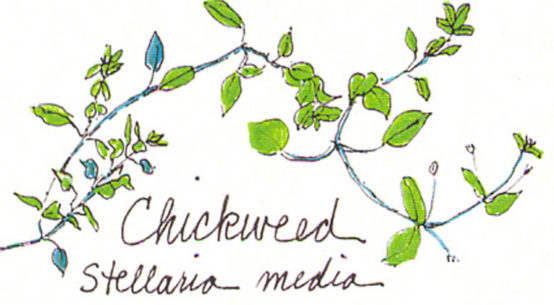
Every year, women around are the world constantly struggle with one of their worst nightmares … cellulite on the skin of their thighs and buttocks. Some may not experience the first ripple of cellulite until they reach the age of 40, while other women may start to experience it as young as age 18. It’s estimated that 85% of women over age 20 have some degree of cellulite and the other 15% think they do.
Cellulite is not a medical condition, but the result of localized adipose (excess body fat) deposits and edema (fluid retention) within the subcutaneous tissue beneath the surface of the skin. The accumulation of these fats and fluids create a dimpled effect sometimes referred to as the “orange peel” or “cottage cheese” effect. As unsightly as this may seem, it occurs mainly in post-adolescent women for a biological reason: to ensure enough fat calories are available for pregnancy and lactation. Consequently, there is no real “cure” for this condition and there is no way to prevent it. The best we can hope for is reducing or minimizing its appearance.
With the constant and relentless pressure to live up to the impossibly high standards of beauty embodied by the models we see in the glossy pages of fashion magazines and the successful stars up on the big screen, women everywhere spend millions of dollars a year ($12 million in U.S. department stores alone!) on expensive products and treatments specifically designed to diminish the appearance of cellulite, including lotions, creams, gels, “Medi-spa” and other “aesthetic” treatments involving hi-tech devices.
Although cellulite can affect both men and women, it is rarely found in men. This is due to the differences in the way connective tissue behaves in men and women. In women, the long fibers of connective tissue tend to segregate fat into channels (think down quilt). As the fat channels expand the perpendicular connective tissue remains fixed causing a “tethering” effect that leads to the puckered appearance of the skin. In men, the connective tissue is arranged in a criss-cross pattern so the appearance of the skin remains relatively smooth even as the fat expands.
There are a number of aggravating factors that cause cellulite, the most prominent being the influence of hormones like estrogen and progesterone which are known to stimulate lipogenesis (fat cell generation) and inhibit lipolysis (the break down of fat stored in fat cells). Additional contributing factors include water retention and perhaps the biggest culprit of all: poor circulation. That’s why most cellulite treatments focus on lymphatic drainage, increasing micro vascular circulation, reducing the size and volume of fat cells (decreasing the tension on surrounding connective tissue), and promoting lipolysis.
While creams, lotions, and gels may be able to firm the skin and improve the overall look of cellulite, no topical application can offer a long-term or lasting solution. More radical treatments come in the form of surgery or hormone therapy. Many women opt for liposuction or its successor “liposculpture” as a way to literally “suck” the fat out in an attempt to eliminate their cellulite. This method appears to work, but since it doesn’t address the underlying causes of cellulite, there is no guarantee that the condition won’t eventually return. The inherent risks of surgery aside, this procedure can also weaken the skin, which means that as you age and your skin naturally becomes thinner, the appearance of cellulite can become even more pronounced. So far, hormone therapy has resulted in a lot of adverse side effects so it is not widely used.
There are a number of FDA-approved treatments that use equipment designed to stimulate the flow of blood and lymph, and tighten skin by manipulating the underlying connective tissue. The two most commonly used and effective treatments are Endermologie® and TriActive™. The former is a French-designed form of deep-tissue massage combined with suction that pulls the skin into a handheld machine where it’s compressed and rolled to increase blood and lymphatic flow. Treatment is done in a series of 30-45 minute sessions over several months. With the latter, a laser device combines rhythmic suction massage with superficial cooling and laser pulsation. The treatment protocol is very similar to Endermologie®.
Both techniques have been proven safe, effective and easy to use, but like liposuction, these treatments are expensive and there is no guarantee that the cellulite won’t return. Newer laser procedures designed to get under the skin and burn off the fat have been recently introduced into the market place with questionable results.
So what can you do to manage and minimize your cellulite if you don’t have the funds for, or are not inclined to subject yourself to, these procedures? Here’s a quick run down of some things you can do that will help:
- Daily exfoliation of the affected areas can help to stimulate circulation, bringing more blood to the area and moving lymph out –clearing out toxins that often become locked up in fat cells. Use a body scrub made from sea salt, brown sugar or a combination of both. Rosemary essential oil stimulates circulation and blood flow while Grapefruit, Lemon and Juniper Berry can assist with detoxification of the tissue. Follow up with a body oil or lotion that has Lavender essential oil to help balance and regulate the skin.
- Drink plenty of purified or filtered water to help keep your cells hydrated and regularly flush out toxins from your body. This will improve the overall appearance of your skin and help improve your energy level as well.
- Eat a balanced diet high in fiber, protein, phyto-nutrients, and generous amounts of healthy fats (Omega 3s found in nuts, flaxseeds, and fish oils). Eliminate trans-fats and processed sugars. This will ensure you get the necessary nutrients you need to promote healthy cell regeneration, fight free-radical formation and balance your hormones. Add spices with thermogenic (fat-burning) properties like cinnamon, ginger, turmeric, or curry to your foods and remember that protein stimulates your body’s metabolism, which promotes fat-burning as well.
- Exercise regularly. This also helps promote your body’s fat-burning mechanisms, increase circulation and blood flow, and lymphatic drainage.
- Get a regular massage. Massage, especially deep tissue massage, has many health and therapeutic benefits including enhanced lymph drainage, improved blood flow, and increased detoxification. Consider an aromatherapy massage using some of the essential oils mentioned above.
- Minimize skin damage from overexposure to UV rays. Try not to spend too much unprotected time in the sun and avoid sunburns. These can weaken the skin and make it more vulnerable to free radical and cellulite formation.
Since cellulite can’t be prevented or completely eliminated it’s important to find a way to make peace with it. Taking good care of your body and your skin can help minimize its unsightly effects while supporting your ability to maintain perspective.













